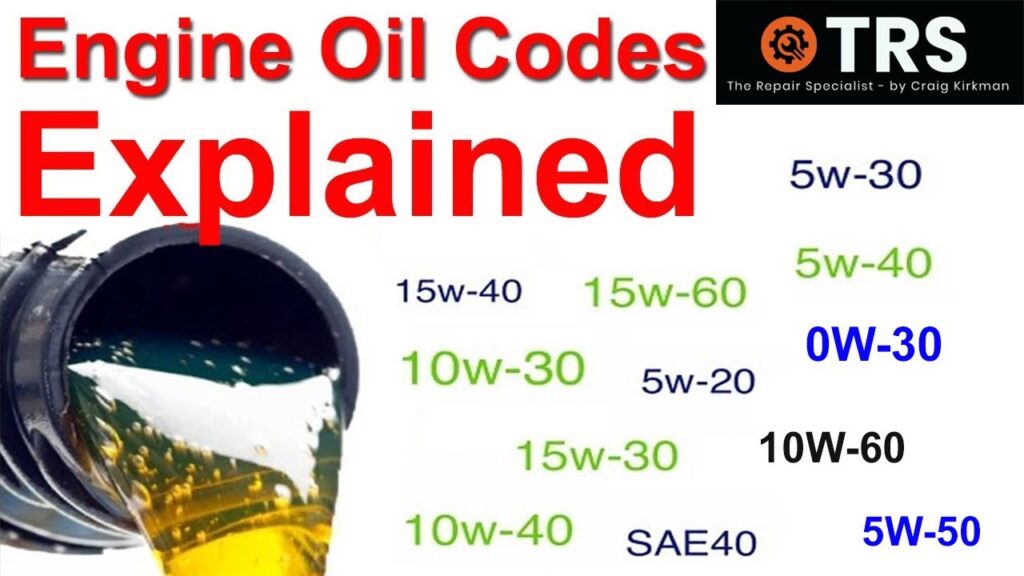Whether you are new to cars or not, you are likely keen to learn more about improving your car’s performance and efficiency. The motor oil is a crucial aspect of this. However, even if you understand what motor oil is for, have you ever noticed the S.A.E. Number on motor oil? If yes, do you know what it means? Would you like to? Well, keep reading.

What Is The SAE?
The SAE is a special organization that was established in 1905 by Henry Ford and Andrew Ricker. SAE is an abbreviation for Society of Automotive Engineers and was set up with the primary goal of providing automotive engineers scattered across the country with an umbrella organization. In time, the role of the SAE evolved and it became much needed resource within the automobile industry so they could share technology and engineering developments.
Continued Expansion of the SAE’s Role
While the SAE as an organization continued to evolve and grow, so too did its role in the auto industry. After just 10 years of it being put in place, starting with just The Automobile’s Howard Swetland and Horseless Age’s Peter Heldt as advocates, it had grown and developed. If fact, by 1916, the SEA had added tractor and aeronautical engineers and it took more of the form it currently has. Swetland and Heldt had a strong belief in professional and personal development and wanted the SAE to move towards that direction. During the same year, the organization had become a global enterprise but it still believed in getting support through sections by acting locally.
Once World War One had ended and during the post-war years, the organization continued to expand and grow. In addition to its role as an educational body, it also became an international standards agency, for instance, taking a crucial lead in providing standards in oil for consumers.
SEA Sets Global Oil Standards
In numerous fields, such as aerospace, petroleum, trucks, and cars, the SAE provides global standards. The organization makes sure that an important item for automobiles such as oil, meets a standard throughout the world. This essentially means if you buy a quart of 5W-30 for example, in New York it will be exactly the same as one you pick up in Sri Lanka.
If it weren’t for an organization like SEA being in existence, there could likely be various oil standards across the globe, even a different one for each and every country, rather than just one for the whole world. This would result in a dramatic increase in the overall cost of motoring and oil.
At the moment the SEA is responsible for maintaining over 1,600 standards and practices car and other vehicle documents. Although they are not considered a force of law, in the documentation for the NHTSA or National Highway Traffic Safety Administration, some standards from the SAE have been included by the SAE that the federal safety agency established. It is also true of the NHTSA’s northern counterpart, Transport Canada.
Explaining A Little About Oil Viscosity
The SAE has one particularly important role and that’s the establishment and sticking to petroleum product standardization. Included in that standardization is a testing program that makes sure all products have attributes that are exactly the same. What is oil viscosity? This is a measure of resistance to flow.
Therefore a 5W-30 oil, for instance, has reasonably good characteristics during the heat of summer and the cold of winter. In other terms, at minus 35F, the oil refrains from gelling and maintains its ability to flow smoothly. Oil can also maintain its ability to protect an engine at extreme temperatures, up to 212 degrees F and its ability to flow smoothly. It is these test points that the SAE use.
The SAE program for testing is centered around 30 as the viscosity number. An oil is identified as a multi-weight oil when it is at minus 35F and keeps a 30-weight oil characteristic- it is described as 5W-30. The W suggests that the oil is winter-grade and will flow better when the temperatures drop. While the 30 describes it as being a 30-weight oil that will flow well in higher temperatures. As well as applying to multi-grade oils, SAE standards apply to single-grade products too.
SAE’s Mission
In the beginning, the SAE was established as an umbrella organization for the numerous automotive engineers scattered throughout the country. It was meant to act not just in an assistance role, but also to educate and inform its members to keep them up-to-date with any changes. This has always been a central part of the organization’s mission.
Just as important though, is the fact the SAE gives consumers the assurance that vital items such as motor oil have the same standards across the globe, in addition to being a way to measure the quality. Over time, the SAE’s role has grown to be imperative in our modern multifaceted world.
Originally posted 2024-01-29 10:02:22.